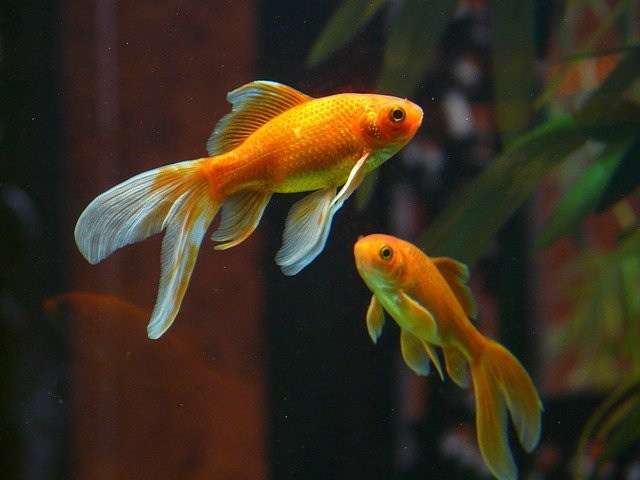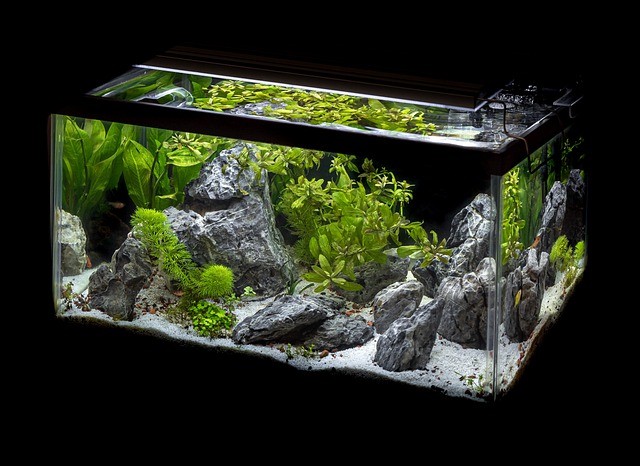The Complete Goldfish Care Guide: How to Care for Your Goldfish and Keep Them Happy & Healthy

The Complete Goldfish Care Guide: How to Care for Your Goldfish and Keep Them Happy & Healthy
Introduction to Goldfish
Goldfish are considered to be among the most popular aquarium fish people have. They are easy to care for and they come in a variety of shapes, sizes, and colors.
Goldfish care is not difficult at all, but it takes some time to learn how to properly take care of them. When choosing a tank size you need to make sure that the tank is big enough for your fish. For example, if you buy 3 goldfish then you need at least a 10-gallon fish tank.
You may spend anywhere from $5 on up for this fish. The price will depend on where you buy it from and what type of goldfish it is (common, comet, feeder).

Goldfish Care for Newly Acquired Fish
In this section, we will discuss how to take care of a new fish tank. We will talk about the water quality improvement and the following measures to take in order to do so.
1. Check the pH balance in your tank. This is a good way to reduce the number of bacteria because a change in pH could kill bacteria that might be multiplying due to lower water quality.
2. Clean your filter media regularly with fresh water from a faucet or bucket. This would remove any dirt that might be causing an increase in nitrates which, in turn, causes algae blooms and other problems for your fish tank plants and inhabitants.
3. Keep an eye on the nitrate levels of your tank by testing it periodically with tablets or strips from a pet store or aquarium store along
What You Need to Start a Tank at Home

Most people are thinking about getting a “fish tank” but what they don’t realize is that there are so many different types of tanks. There are salt water, fresh water, and even brackish water tanks.
This article will discuss the equipment you need for a new tank setup for any of these types of setups.
Freshwater Fish Tank
- Aquarium/Tank
You need to decide where you want to put your aquarium, determine what size you want or may only have room for, whether you want an acrylic or glass tank, and choose a style that will best fit into the spot you have picked out to display it. - Water Conditioner
Having the right bacteria in the aquarium water is important. Water conditioner for fish helps inoculate your tank with the exact kinds of bacteria required to break down and digest the ammonia excreted as waste by your aquarium inhabitants.
Ammonia is toxic, and a buildup of it in the tank water can kill your freshwater fish. Using a water conditioner, like Fluval cycle biological enhancer, enables you to jumpstart your system’s bacterial colonization and prevent the toxic buildup from happening in the first place. - Fish Filter
In addition to generating essential water movement, a fish filter, like the Fluval aquarium power filter, provides your water with three important types of filtration: mechanical, chemical, and biological. Each filtration type offers important benefits.
Mechanical filtration happens when the water passes through a fish tank filters pad designed to trap debris. Chemical filtration occurs as the water flows through activated carbon, which removes toxins. Biological filtration occurs as the water comes in contact with a medium that is colonized by healthy, nitrifying bacteria; it breaks down ammonia and makes the tank water safe for your freshwater fish. - Aquarium Heater
If you plan to keep tropical fish, they need water that consistently is warm. And if you’re thinking, “My house thermostat is set at 72 degrees Fahrenheit; that’ll keep the tank warm enough,” think again.
Your fish will survive, but keeping them comfortable makes them healthier and less stressed. Specific temperature requirements vary depending on species, but the general range for tropical fish is between 75- and 80-degrees Fahrenheit. Keep your freshwater fish tank at the ideal temperature by using a device like the Fluval Submersible glass aquarium heater. - Air Pump
Water flow is important because it promotes gas exchange between the air and the water. Employing an air pump, like the Fluval Air Pump for aquariums, keeps the water oxygenated, which makes it easier for your fish to breathe. It also aids in making sure the water is heated evenly instead of just pockets of stagnant warm water around the heating element. - Substrate
While fish tank substrate assists with aesthetics, it serves functional roles as well. In its simplest form, the substrate on the bottom of your fish tank filters offers another surface upon which good bacteria can grow. If you plan to grow plants that require covered roots, you will need the proper substrate for this as well.
There’s a wide variety of sizes, colors, and shapes of substrate out there when choosing the right one for your tank. Having a vision of the finished aquarium you want will help you decide on the best substrate option for your system.
Polished gravel is a good option for many freshwater aquariums like the Exotic Pebbles polished mixed gravel. Bioactive substrate, like the Activ-Flora, planted aquarium substrate, can also be a great way to jumpstart plant growth if you’re planning to keep live plants in your tank. - Lighting
The type of lighting you choose will be based on the type of system you have planned to set up, as well as what kind of livestock you will be keeping in it.
Equipment for Freshwater Fish Tank
- Aquarium/Tank
You need to decide where you want to put your aquarium, determine what size you want or may only have room for, whether you want an acrylic or glass tank, and choose a style that will best fit into the spot you have picked out to display it. - Water Conditioner
Having the right bacteria in the aquarium water is important. Water conditioner for fish helps inoculate your tank with the exact kinds of bacteria required to break down and digest the ammonia excreted as waste by your aquarium inhabitants.
Ammonia is toxic, and a buildup of it in the tank water can kill your freshwater fish. Using a water conditioner, like Fluval cycle biological enhancer, enables you to jumpstart your system’s bacterial colonization and prevent the toxic buildup from happening in the first place. - Fish Filter
In addition to generating essential water movement, a fish filter, like the Fluval aquarium power filter, provides your water with three important types of filtration: mechanical, chemical, and biological. Each filtration type offers important benefits.
Mechanical filtration happens when the water passes through a fish tank filters pad designed to trap debris. Chemical filtration occurs as the water flows through activated carbon, which removes toxins. Biological filtration occurs as the water comes in contact with a medium that is colonized by healthy, nitrifying bacteria; it breaks down ammonia and makes the tank water safe for your freshwater fish. - Aquarium Heater
If you plan to keep tropical fish, they need water that consistently is warm. And if you’re thinking, “My house thermostat is set at 72 degrees Fahrenheit; that’ll keep the tank warm enough,” think again.
Your fish will survive, but keeping them comfortable makes them healthier and less stressed. Specific temperature requirements vary depending on species, but the general range for tropical fish is between 75- and 80-degrees Fahrenheit. Keep your freshwater fish tank at the ideal temperature by using a device like the Fluval Submersible glass aquarium heater. - Air Pump
Water flow is important because it promotes gas exchange between the air and the water. Employing an air pump, like the Fluval Air Pump for aquariums, keeps the water oxygenated, which makes it easier for your fish to breathe. It also aids in making sure the water is heated evenly instead of just pockets of stagnant warm water around the heating element. - Substrate
While fish tank substrate assists with aesthetics, it serves functional roles as well. In its simplest form, the substrate on the bottom of your fish tank filters offers another surface upon which good bacteria can grow. If you plan to grow plants that require covered roots, you will need the proper substrate for this as well.
There’s a wide variety of sizes, colors, and shapes of substrate out there when choosing the right one for your tank. Having a vision of the finished aquarium you want will help you decide on the best substrate option for your system.
Polished gravel is a good option for many freshwater aquariums like the Exotic Pebbles polished mixed gravel. Bioactive substrate, like the Activ-Flora, planted aquarium substrate, can also be a great way to jumpstart plant growth if you’re planning to keep live plants in your tank. - Lighting
The type of lighting you choose will be based on the type of system you have planned to set up, as well as what kind of livestock you will be keeping in it.
Equipment for Saltwater Fish Tank
- Aquarium/Tank
You need to decide where you want to put your aquarium, determine what size you want or may only have room for, whether you want an acrylic or glass tank, and choose a style that will best fit into the spot you have picked out to display it. - Lighting
The type of lighting you choose will be based on the type of system you have planned to set up, as well as what kind of livestock you will be keeping in it. - Skimmers, Filters & Filtration Equipment
Once again, what type of system you are going to set up will help you determine which kind of filters and filtration system to choose. - Powerhead
Depending on the size of your aquarium, the use of one or several powerheads is an excellent way to provide good water circulation throughout the system. - Live Rock & Substrate
Here you need to decide on what type of material you want on the bottom of the tank, as well as whether you want to start with a live or non-living medium. Live Rock plays an important role in a marine tank. Many marine animals, fish in particular, can be quite territorial. It is important to provide ample shelter or places where the animals can hide, sleep, and avoid potential problems with aggression from other tank mates in the confined space of an aquarium. - Sea Salt Mix/Saltwater & Hydrometer
Sea salts are what make an aquarium a saltwater or marine aquarium. Also referred to as a salinity tester, this item measures the specific gravity or salt content of the water. - Heater & Thermometer
For smaller aquariums, one heater works well, but for larger systems, the use of multiple units is advised. With stick-on, floating, multi-function remote digital sensors, and many other types of units to pick from, the material a thermometer is made of is an important factor when choosing one as well. - Air Pump & Air Stones
Only needed if you are going to run a piece of equipment that requires these items, such as a counter-current protein skimmer. - Test Kits, Additives & Supplements
For live rock and reef tank systems, calcium (a.k.a. limewater/kalkwasser) needs to be added. Other supplemental vitamins or additives that are beneficial to the health of certain marine inhabitants you may be keeping, such as iodine for crustaceans, are important as well. - Maintenance Tools & Supplies
This category includes having items on hand such as various sized plastic buckets or containers, tank cleaning tools such as a siphon tube/hose, an algae scraper or magnet, as well as nets of different sizes, spare equipment replacements parts, and so on. A good way to keep track of what maintenance tasks you have performed and when is to keep a logbook or record of everything you do.
Annual Maintenance and Tips on Preventing Plant Disease outbreaks in Your Tank
Some of the best ways to prevent plant disease outbreaks are to provide good water quality, avoid overcrowding the tank, and be proactive with your maintenance.
There are many kinds of plant diseases that can affect your tank. Some of the most common ones are algae blooms, bacterial infections, and uncontrolled plant growth. These can have a negative impact on your tank’s health and well-being. The best way to prevent these is by following some simple steps. Some of the best ways to prevent plant disease outbreaks are to provide good water quality, avoid overcrowding the tank, and be proactive with your maintenance.




